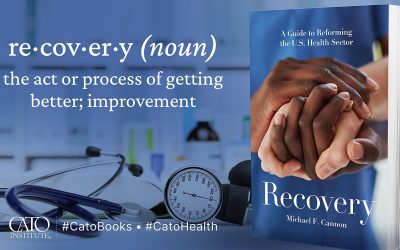Although the Founding Fathers were committed to protecting the individual’s property rights as well as his political/ intellectual rights, the Supreme Court since the 1930s has consistently failed to protect the former. This dereliction is the main theme of Siegan’s exceptional study. He makes a sweeping case for reinstituting principled judicial activism to strike down anti-property legislation, even in the face of 50 years of precedent to the contrary.
In this work Siegan describes the evolution of the High Court’s interpretation of economic liberties. Property rights were fairly well protected by the Court through the nineteenth century. But by the 1930s the Court had wholly abdicated any judicial review of legislation mandating occupational licensing, minimum wage laws, redistributionist schemes, zoning and eminent domain takings. This indifference toward economic liberties was summed up in a 1963 opinion handed down by Justice Black, who said “whether the legislature takes as Its textbook Adam Smith, Herbert Spencer or Lord Keynes no concern of ours.” At the same time, however, the Court was active in striking down legislation that violated civil and political rights, such as in First Amendment cases.
Siegan rejects this dichotomy outright, showing the inextricable interdependence of property rights and intellectual rights. He exposes the Court’s double standard by contrasting the following two approaches: Regulation of economic activity is often upheld by the Court on the grounds that a laissez-faire economy inevitably leads to “excesses” and “abuses,” necessitating regulation which amounts to prior restraint upon freedom of action; yet prior restraint or regulation of political expression is routinely struck down, even as justices cite the resulting “excesses ” and “abuses” as a small price to pay for freedom.
Siegan reminds us that the Constitution speaks to property rights in four areas: the prohibition on ex-post facto laws; the prohibition on laws impairing the obligation of contracts (the “contract” clause); and prohibitions on state barriers to interstate commerce (the “Commerce” clause). In addition, the common law precedent, notes from the Constitutional and ratifying conventions, and the clear influence on the framers of Lockean ideas of property all support the view that property rights were meant to have full constitutional protection.
Instead, the Court has narrowly construed the ex-post facto provision to ap- ply only to criminal, not economic, cases; has freely allowed Congress to dictate contractual terms of trade and employment; has placed the burden of proof on those whose property has been taken (to show that a “sufficient public purpose” is not extant); and has interpreted the Commerce clause as Inviting legislative regulation of interstate commerce by the federal government. Siegan regards all such decisions as abrogation’s of constitutionally protected rights.
Economic Liberties and the Constitution is a scholarly, crucially important contribution to the argument for restoring judicial review to protect property rights. Siegan even urges the Supreme Court to question the very constitutionality of the welfare state, since it amounts in essence to one grand “taking” without compensation. This elucidating book will enable the advocate of individual rights to become as familiar with the legal reforms as with the moral and economic reforms necessary for the creation of a genuinely free society.
This review is made available by the Ayn Rand Bookstore (formerly Second Renaissance Books)




